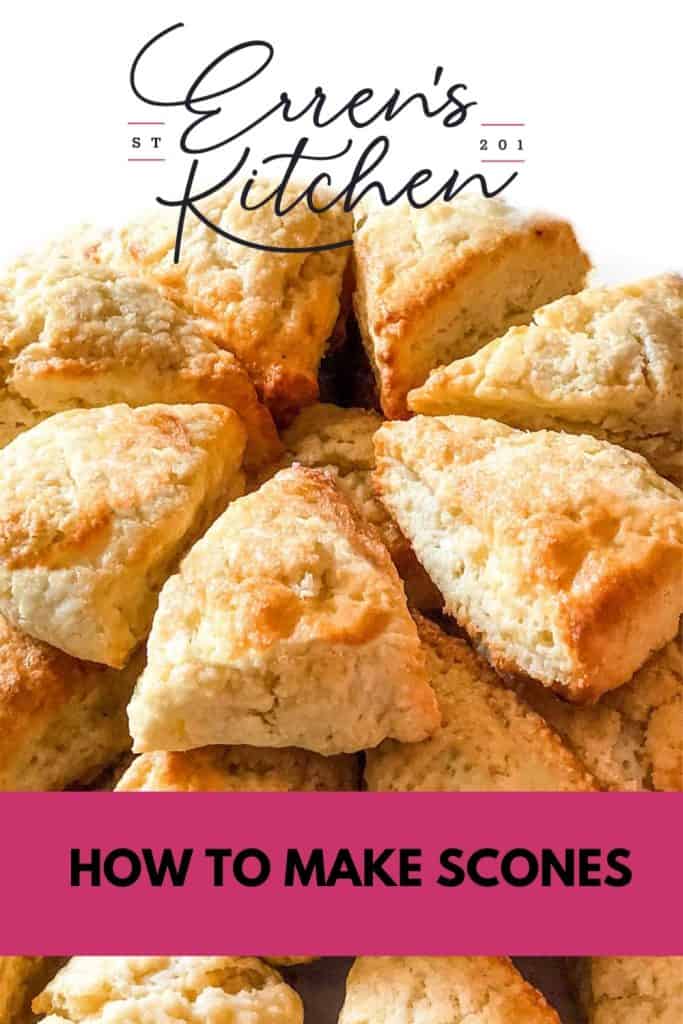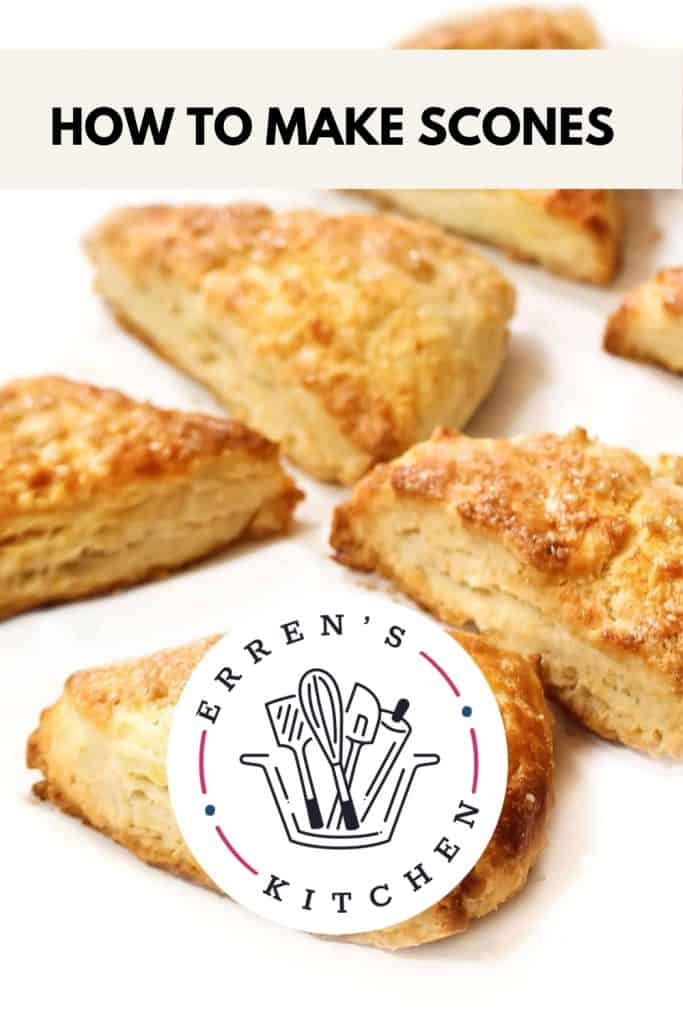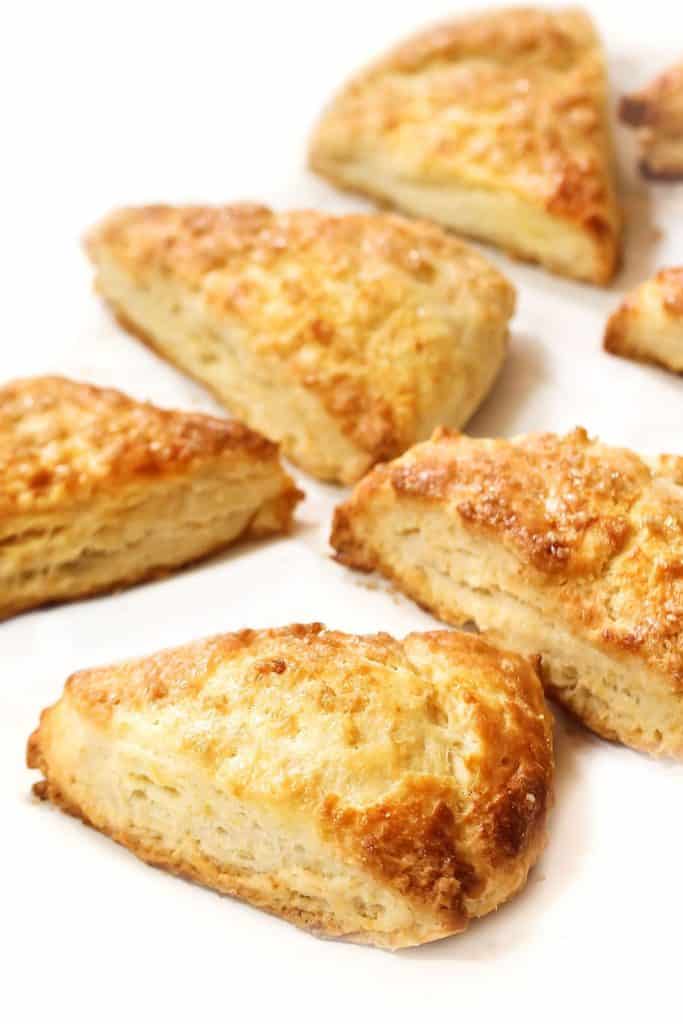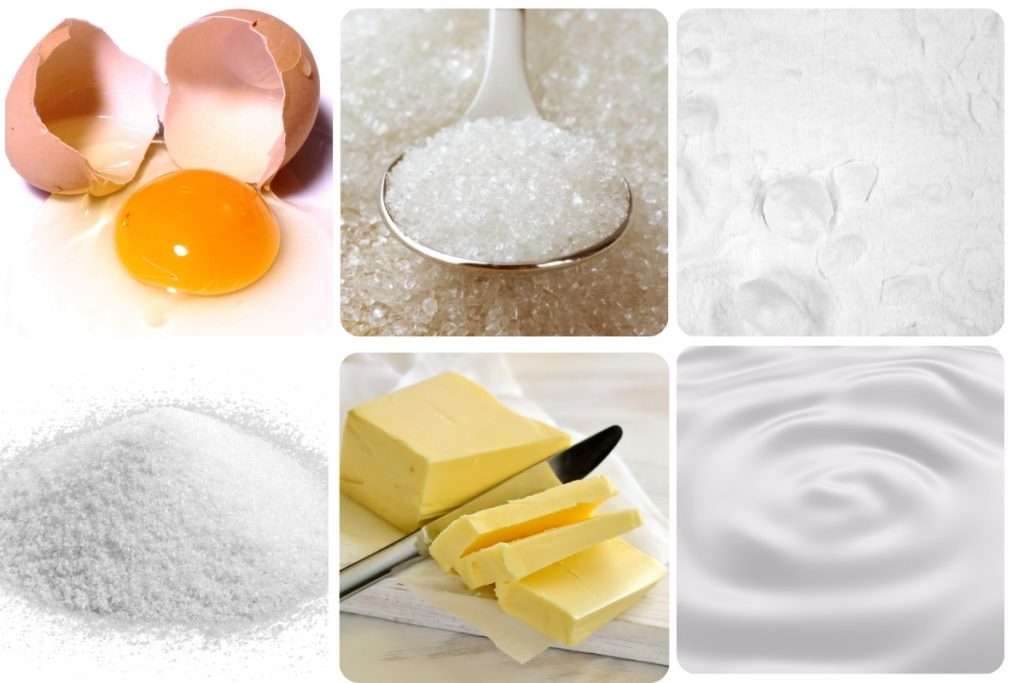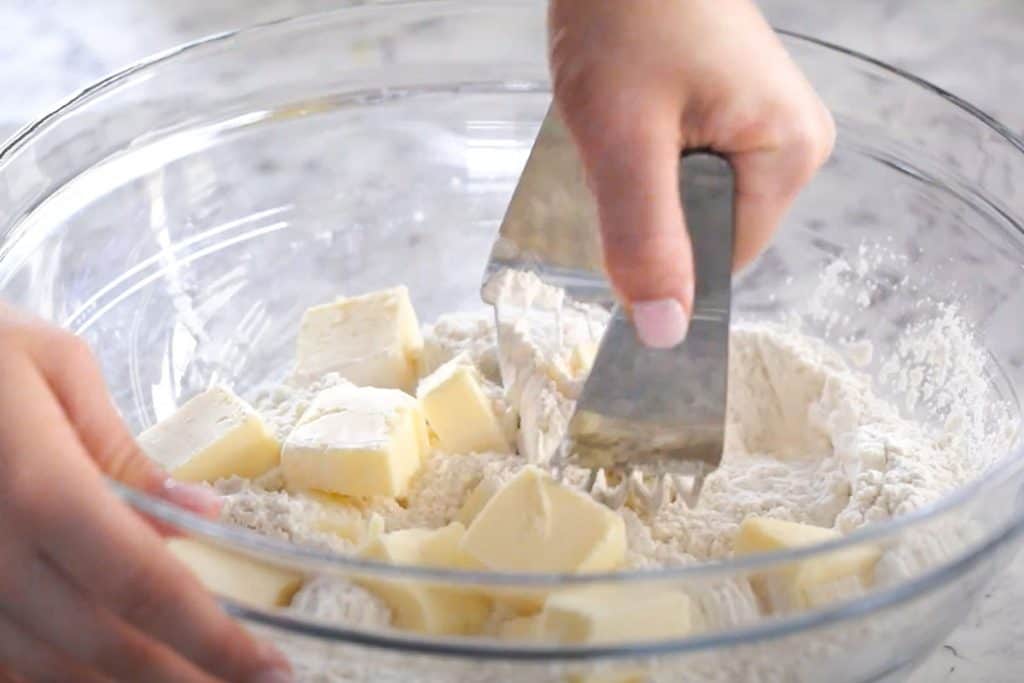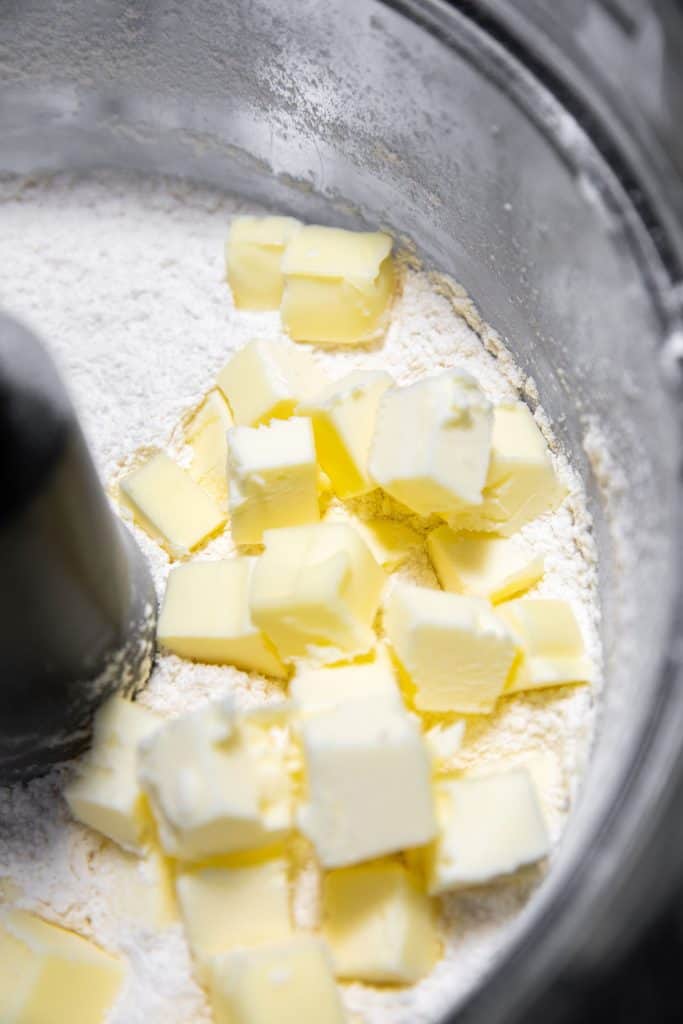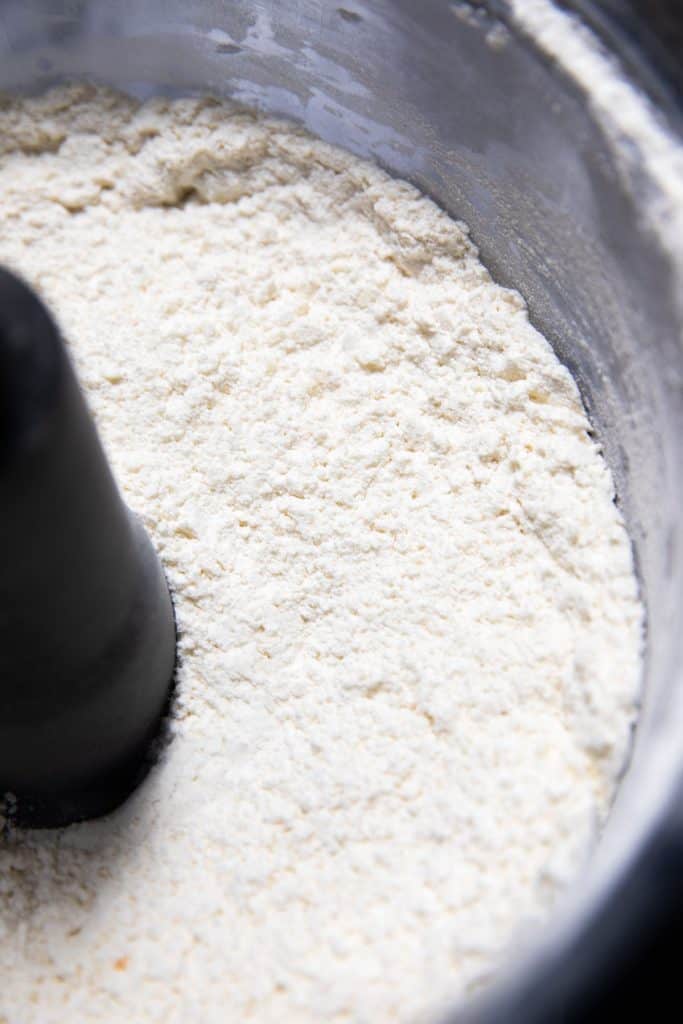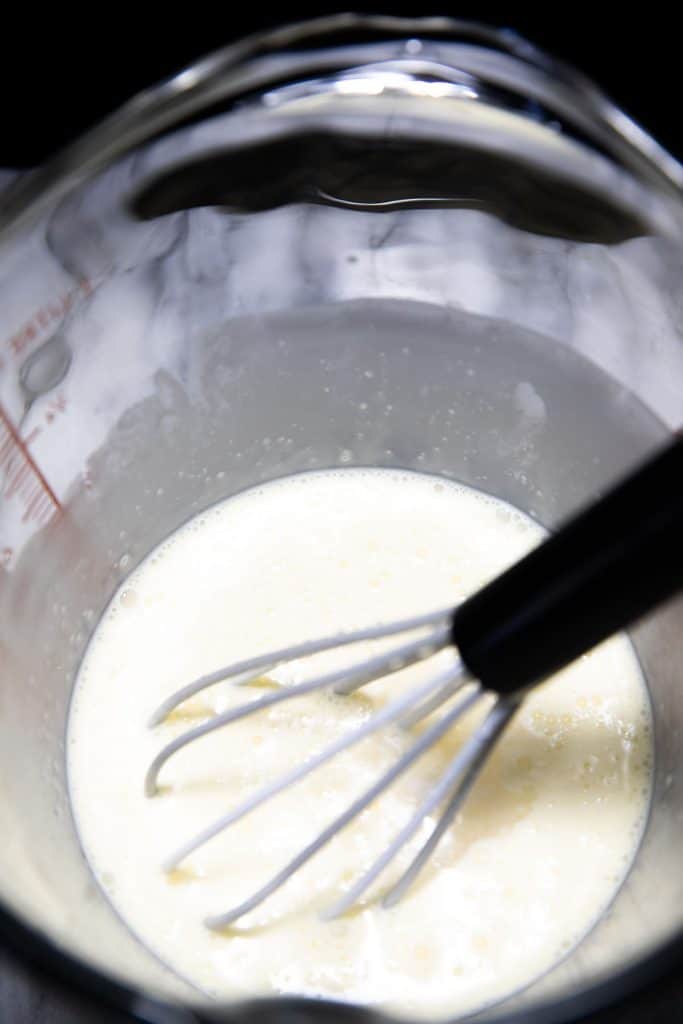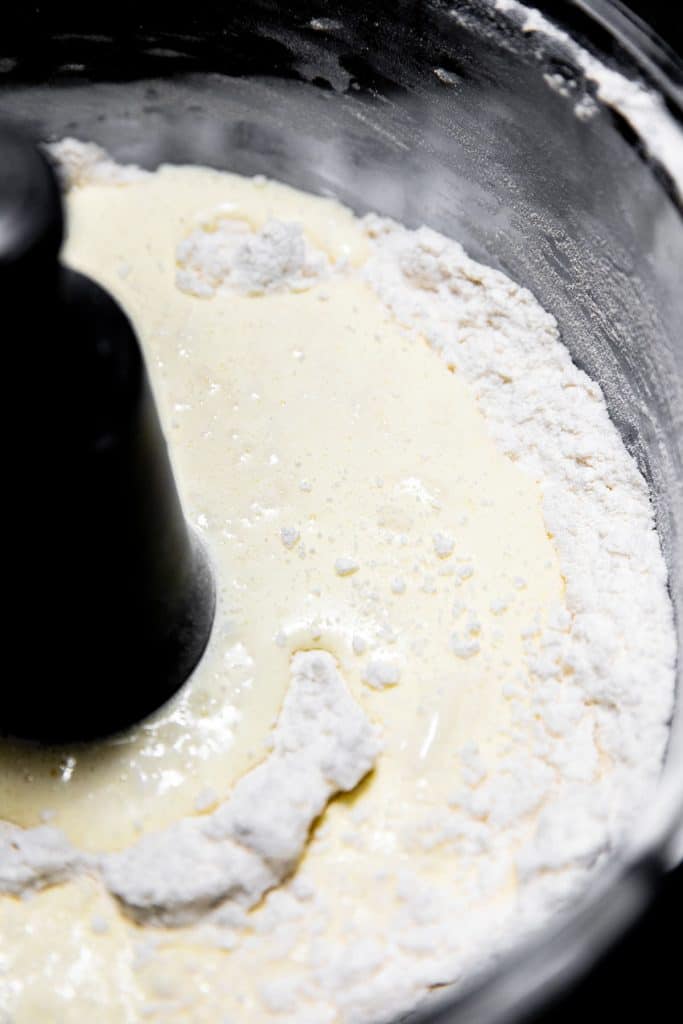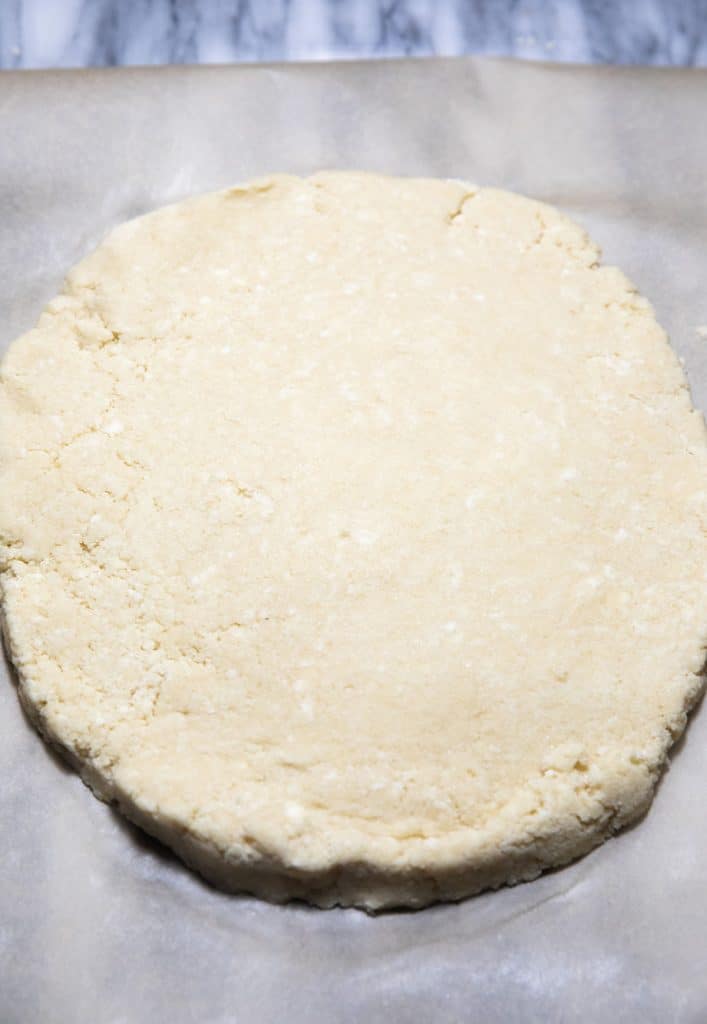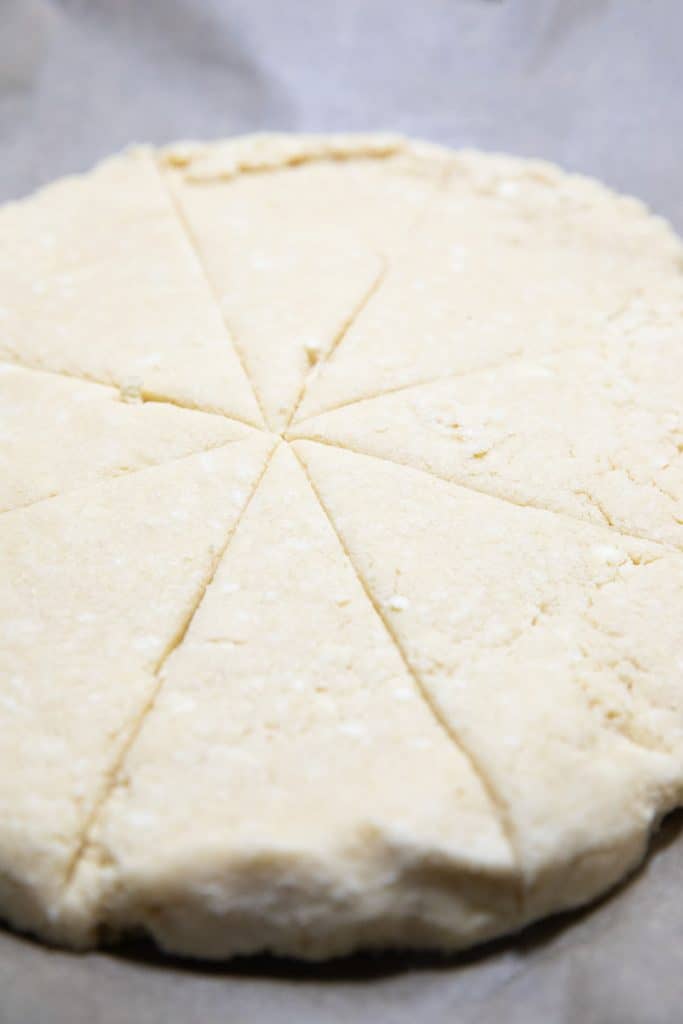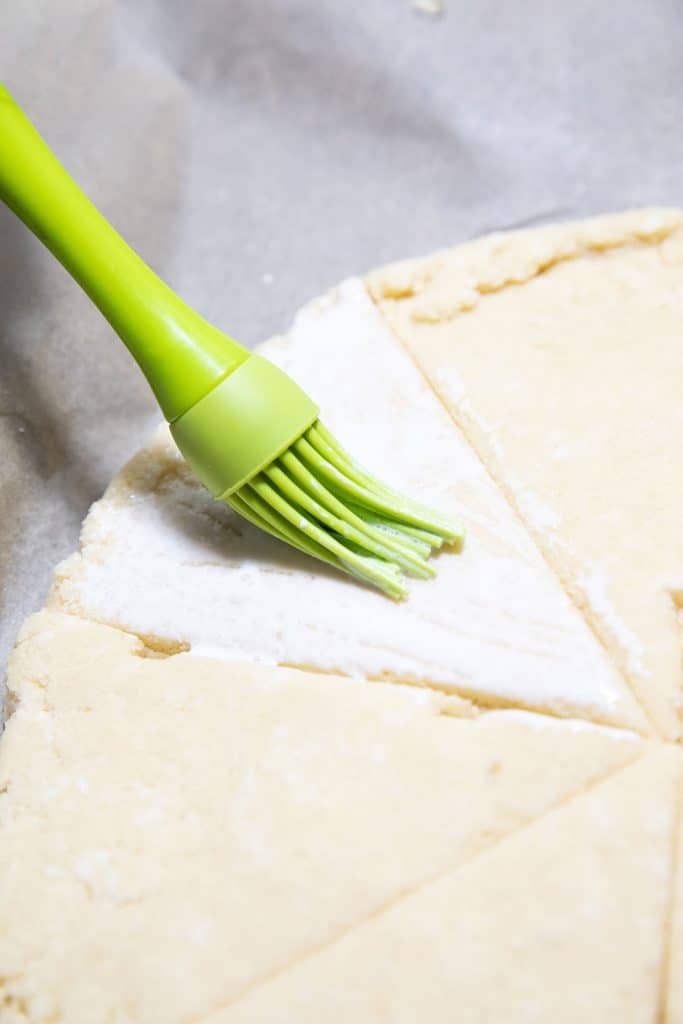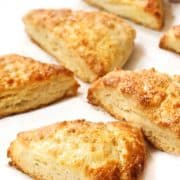Scones are a buttery, flaky delight and I can never get enough of them. I have made a lot of scones in my time and have shared recipes for Blueberry Lemon Scones, Cinnamon Scones, Cranberry Scones, and more, but when it occurred to me that I hadn’t shared my basic scone recipe, I knew I had to get it out there! These wonderful soft bakes are perfect for breakfast or an after-school treat. You can glaze them or add fruit or chocolate chips to make them extra special. This recipe gives you the basis to make your own ultimate scone!
History Of Scones
Scones are believed to have originated in Scotland where the dough was originally made using oats and then shaped into a large round disk, scored into triangles. Then they were cooked on a griddle over an open fire or on the stovetop. Working the butter into the dry ingredients is done using a technique called ‘cutting in’. This is done by cutting the butter into tiny pieces in the flour mixture until it resembles small flour-coated crumbs. This can be done by hand using a pastry cutter, or fork or can also be by using a mixer or food processor. I recommend working by hand if you’re new to the process and move on to other methods once your skills advance. Mix well to combine and add the butter. Cut the butter into the flour mixture until it resembles coarse bread crumbs. Whisk the cream and eggs together. Add the wet mixture to the dry mixture. Mix just until combined. Then and work it together in a ball, and flatten into a 7-inch circle. Cut the dough into 8 equal-sized pieces and place them on the prepared baking sheet. Brush the dough with heavy cream. Bake until golden. Serve and enjoy!
Flat scones that spread when baked are usually caused by the dough being too soft or an oven that’s too hot.A dark color can be caused by too much sugar or an oven that runs hot.Heavy, dense scones can be caused by weak flour, overworked dough, or expired leveling agents.Tough and lacking flakiness can be caused by flour that’s too strong, a raising agent that is expired or not measured well, or an oven that’s not hot enough.Spottiness in color can be caused by uneven mixing.
Erren’s Kitchen is written and produced for informational intentions only. We are not certified nutritionists, and the nutritional information found on this site has not been assessed or authorized by a nutritionist or the FDA. The nutritional information found in our recipes is offered as an estimate and should not be considered a guarantee or fact. The estimated data is provided as a courtesy and calculated through a third-party online nutritional calculator, spoonacular API. Although we do our best to provide accurate nutritional information, these figures should be considered rough estimates. Many factors, such as brands or products purchased and the nutritional fluctuations that naturally occur in fresh produce, can alter the effectiveness of the nutritional information in any recipe. Furthermore, various online calculators provide different results depending on their particular algorithms and nutrition fact sources. To obtain the most precise nutritional information in a provided recipe, you should calculate the nutritional information with the exact ingredients you are using when preparing the recipe using your preferred nutrition calculator.
